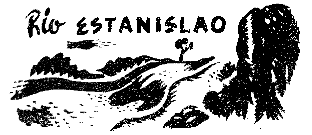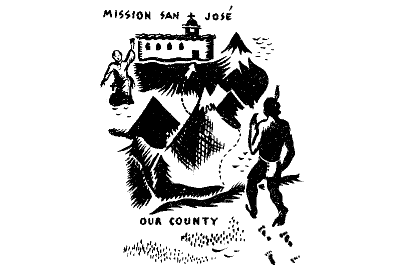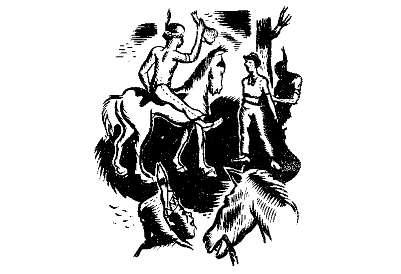Chief Estanislao
Different stories from many sources have materialized about Estanislao, the Native American chief for whom Stanislaus County is named. The stories all link the Yokut Indian to Mission San Jose and include how he was raised by the mission padres during the period of time when the missionaries did not treat the natives with a great deal of respect. The stories all include the fact that Estanislao was bright and learned much during his time at the mission. At some point, after the mission system changed with the advent of Mexican rule in California, life for mission Indians also changed and many of them chose to leave rather than stay under the often cruel hand of the Catholic friars.
With the explanation above in mind, we offer Tinkham's version of events about Estanislao and why Stanislaus County bears his name. Tinkham's story is more concise than the one printed a few years later in Sol P. Elias' "Stories of Stanislaus," providing less flowery prose and a simpler approach to the story, all the time keeping in mind that this version was originally printed almost 100 years ago. Edits have been made to condense the story, but it is essentially Tinkham's writing from Chapter One, "History of Stanislaus," by George H. Tinkham, 1921, entitled "Stanislaus County's First Inhabitants," subtitled, "Chief Estanislao."

|
|
Preceding this section is a discussion of the harsh treatment of the natives by some of the mission priests and how "they endeavored to escape from the Mission at the first opportunity." One of the Indians who succeeded in escaping was a neophyte named Estanislao. He was a man naturally bright, of far more intelligence than the most of his tribe and he had received a good education in the Mission. Burning with hatred against the Fathers and all of the Spanish race, he began a propaganda among the Indian tribes, inciting them to rob the Missions and kill the "sons of Castile." Succeeding in his object the Indians began harassing the Fathers of the San Jose Mission by driving off their horses and killing them for food. Then on every possible occasion they would meet the Christian Indians and persuade them to run away. To check this work as far as possible the government sent out military expeditions. They were commanded to punish the culprits and bring in as prisoners, the men, women and children. . . It was in one of these expeditions, that of 1829, that Estanislao defeated the famous Gen. Marino G. Vallejo, prevously having routed Lieut. Alfred Sanchez. . . General Vallejo . . .had just returned from an expedition to the "tulares," where with a company of forty-five men only he had fought and killed forty-eight braves. Vallejo's company crossed the San Joaquin River on a raft and they were received immediately with a cloud of arrows. Vallejo soon learned that the enemy could not be driven from their stronghold and commanded that the woods be set on fire. This was a movement Estanislao had not anticipated and the Indians were driven out by the smoke and fire, several of them being killed. The fight, however, was carried on throughout the day, and three more soldiers were wounded. That night the Indians abandoned their stronghold. The following morning Vallejo's men entered the woods and found a series of pits and ditches skillfully arranged and barricaded by trees and brush. . . The following day the Indians again challenged the soldiers to battle from another thicket near the Rancho Arroyo Seco. Vallejo tried to parley with them, but they refused either to compromise or surrender. The soldiers then made an attack and brought into use their small cannon. The Indians slowly retreated to their new trenches. . .wounding eight soldiers. In a short time the ammunition of the militia was all gone and they were compelled to cease fighting. The following morning the company left the field to the enemy. This was a second victory for the brave Indian Chief, Estanislao. It is said that dating from that fight the Spaniards dared not invade the territory north of the San Joaquin River and that they named the river where the battle took place, Stanislaus. Later the county took its name from the river. |


